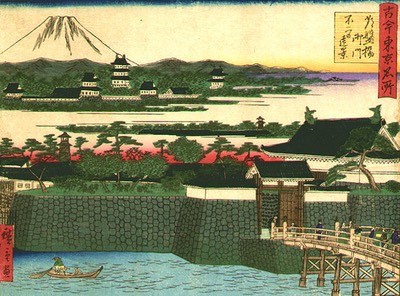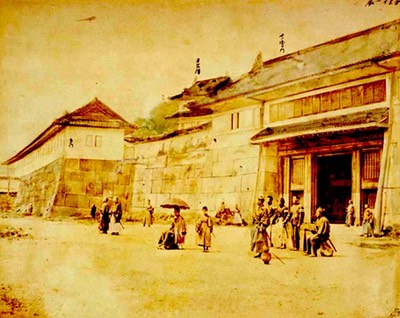It was during the first decade of the seventeenth century, while he was living and teaching in Edo, that, through the offices of his friend Mizuno Katsunari, that Musashi was invited by none other than Shōgun Tokugawa Ieyasu to give a demonstration of his art at Edo castle. According to the Bushū denraiki:
武州兵法、將軍家達上聞、可被召出御沙汰ありといへ共、柳生但馬守殿、御師範として常住御前に侍席せらる。武州、柳生が下に立ん事を忌て、「若年より仕官の望なく、髪剃ず、爪とらず、法外の有様也。御免を奉蒙度」旨達て御斷申上らる。
The shogunal house had taken notice of Musashi’s art of heihô and word was sent to Musashi that they intended to send for him. Lord Yagyû Tajima no Kami Munenori, however, was already serving the Bakufu as shogunal shihan. Musashi railed at the thought of being placed below a Yagyû saying, “From my youth I have held no ambitions for high office, and with my hair and nails uncut I would cut a strange figure, so please forgive me for declining.”
The same record describes how:
武州が繪を御覧被成度由にて、御屏風の繪に被仰付。武蔵野に月の出たる所を、御屏風一杯に書て差上げられしといえり。
In the end, the shogun, having seen one of Musashi’s paintings, commissioned him to paint a folding screen. This time Musashi obliged and presented to the shogun a folding screen with a scene of a rising moon over the plains of Musashi.
The Sakurada Gate of Edo castle
Any queries of remarks? Launch or join a discussion at our new FORUM



